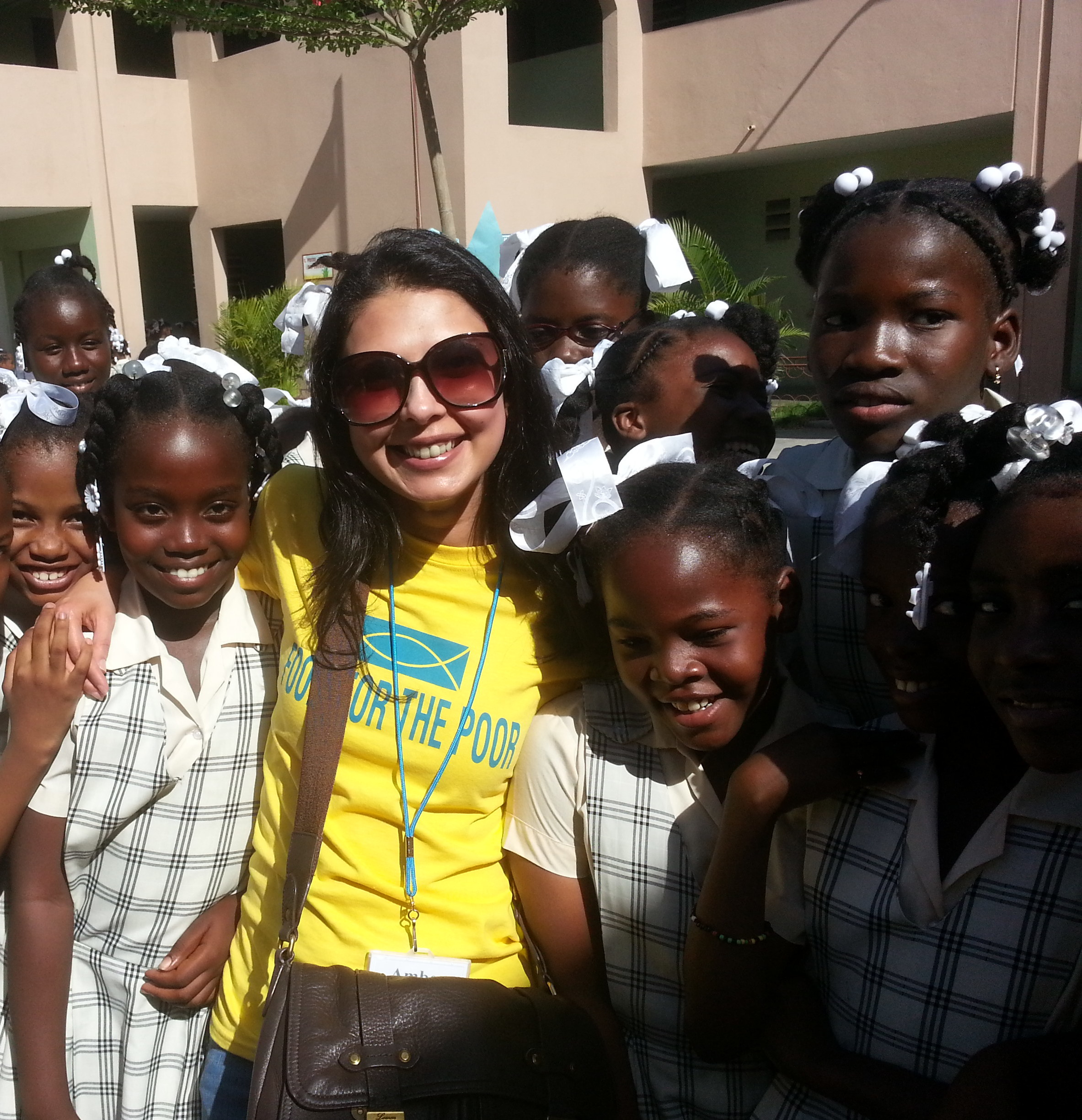Amber Noe is the coordinator of Food For The Poor’s peer-to-peer fundraising program, Champions for the Poor. She recently traveled to Haiti for the first time, and was kind enough to share some of her experiences with us.
By Amber Noe
I recently traveled to Haiti on a Food For The Poor missions group trip. Stepping off the plane, into Port-au-Prince airport, I could already feel a special pull, a certain je ne sais quoi about the land and its inhabitants. Immediately upon arrival, we were greeted by the sounds of Haiti’s rich culture, as a band of musicians played for us in the terminal. Collecting our bags, we stepped out of the airport and into the busy hustle and bustle of the crowd, embarking on our mission.
Our first stop was to L’Ecole Marie Clarac, a school built by the tremendous generosity of Food For The Poor donors. I was not prepared for the heartfelt welcome by these children, who sang in unison at our arrival and performed dance routines highlighting the local culture. Each face bore a smile and a sense of wonder at the possibilities that lie ahead. A future made bright for these precious children by the gift of someone’s selfless giving; a future made possible by the gift of God’s love.
The next day, we ventured out to Ca-Ira, Leogane, a community of 96 families living in utterly deplorable conditions. Sounds of cheers and joy sprang into the air even before the bus came to a halt in front of the village. These were the sounds of hope, rising into the air like a glorious gospel choir.
The residents greeted us with such warmth and welcomed us into their homes and their hearts. Mothers with small children, school-aged kids, they were all living in tiny huts held together by whatever bits and pieces they could find to shelter them from the elements. This is no shelter, though. The homes, which are barely big enough for one person to stand in (arms outstretched) without hitting both walls, harbor families of 4, 5, or more.
When the rains come, there is nowhere to go. The residents must stand within the confines of the dark, dank, dismal shacks until the elements subside. The need for safe housing couldn’t be more apparent. It’s written on the face of every mother, in the eyes of every child, the desperation, the struggle to survive each day.
Through it all, the people maintain hope; hope that their prayers will be answered and that they will be lifted up out of the rubble and have a true place to call home. A home in which they can secure themselves, gather safely, laugh, pray, and be free to feel God’s love.

